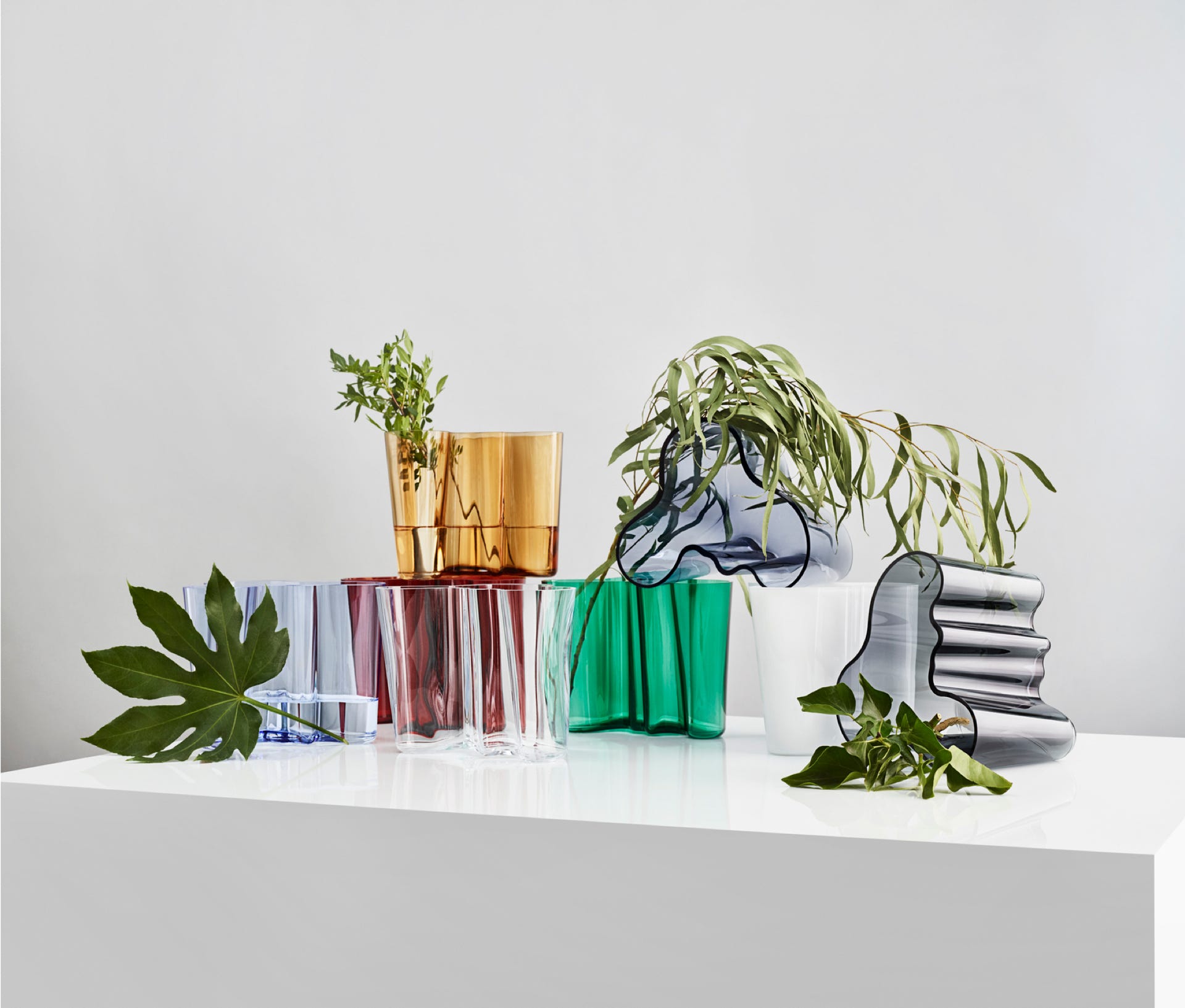
The Aalto vase is an iconic piece of Finnish design, created by Alvar Aalto and his wife Aino Marsio in 1936. It is also known as the Savoy vase. The Savoy vase was part of a range of furniture created by Alvar and Aino Aalto for the Savoy restaurant in Helsinki, which opened in 1937.
The Aalto vase won a design competition in 1936 for the glassmaker Iittala, which still produces it today. Aalto was inspired to design it by the folds of a Same (Eskimo) woman's leather dress.
The conception of the vase consisted of a series of pencil drawings on rough paper, and then Aalto created the first blown glass prototypes with the help of a set of wooden sticks stuck into the ground so as to make the shapes of the molten glass undulate.
The initial production of the vase encountered many difficulties, and the original idea of using thin sheet steel moulds had to be abandoned in favour of a wooden mould, which gradually burned down.
The vase was presented at the 1937 Universal Exhibition in Paris. Its original height was 140 mm. Aalto never won any money with it, as his design belonged to the Iittala company for which the competition had been organised. The vase is produced in many colours, and its simple lines have made it a constant success since its creation.
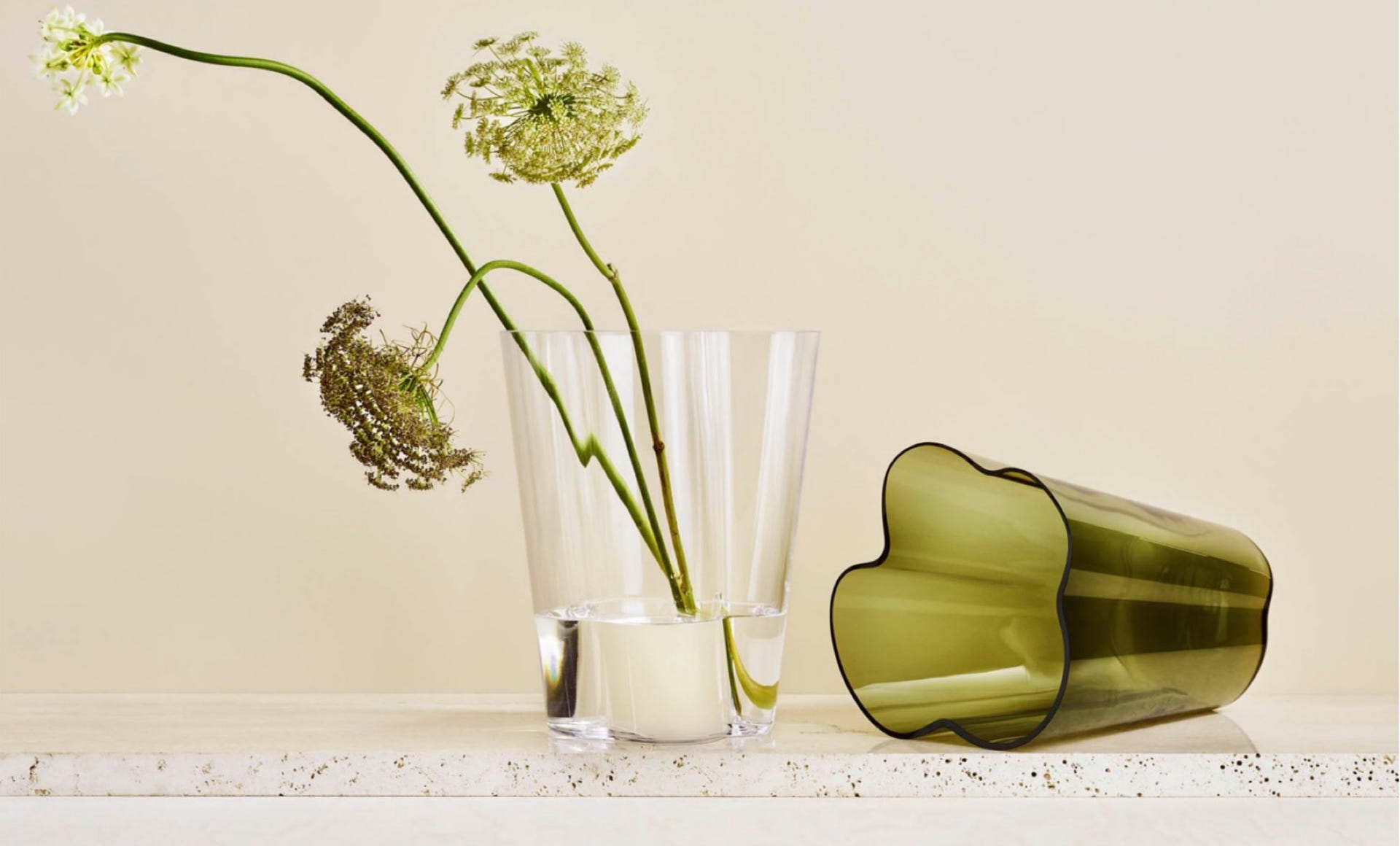
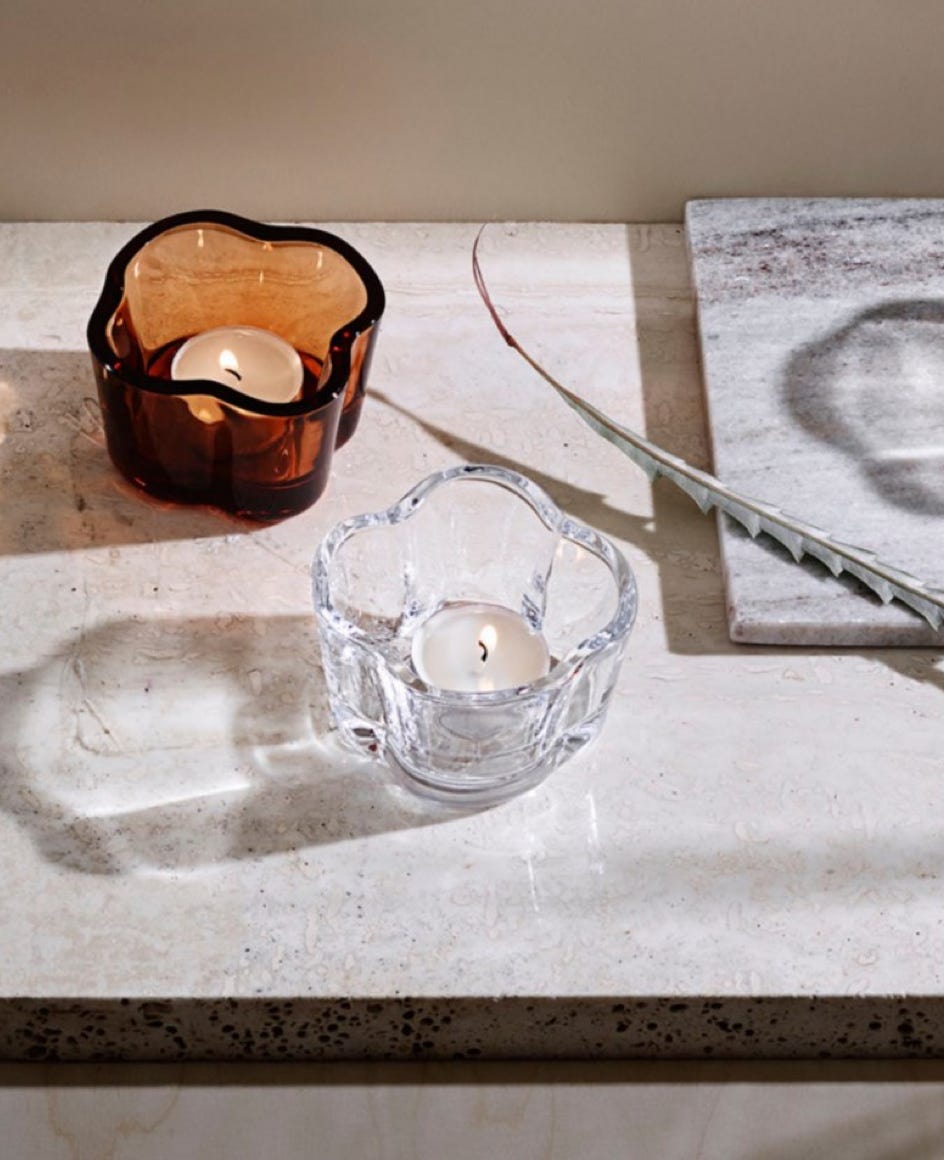
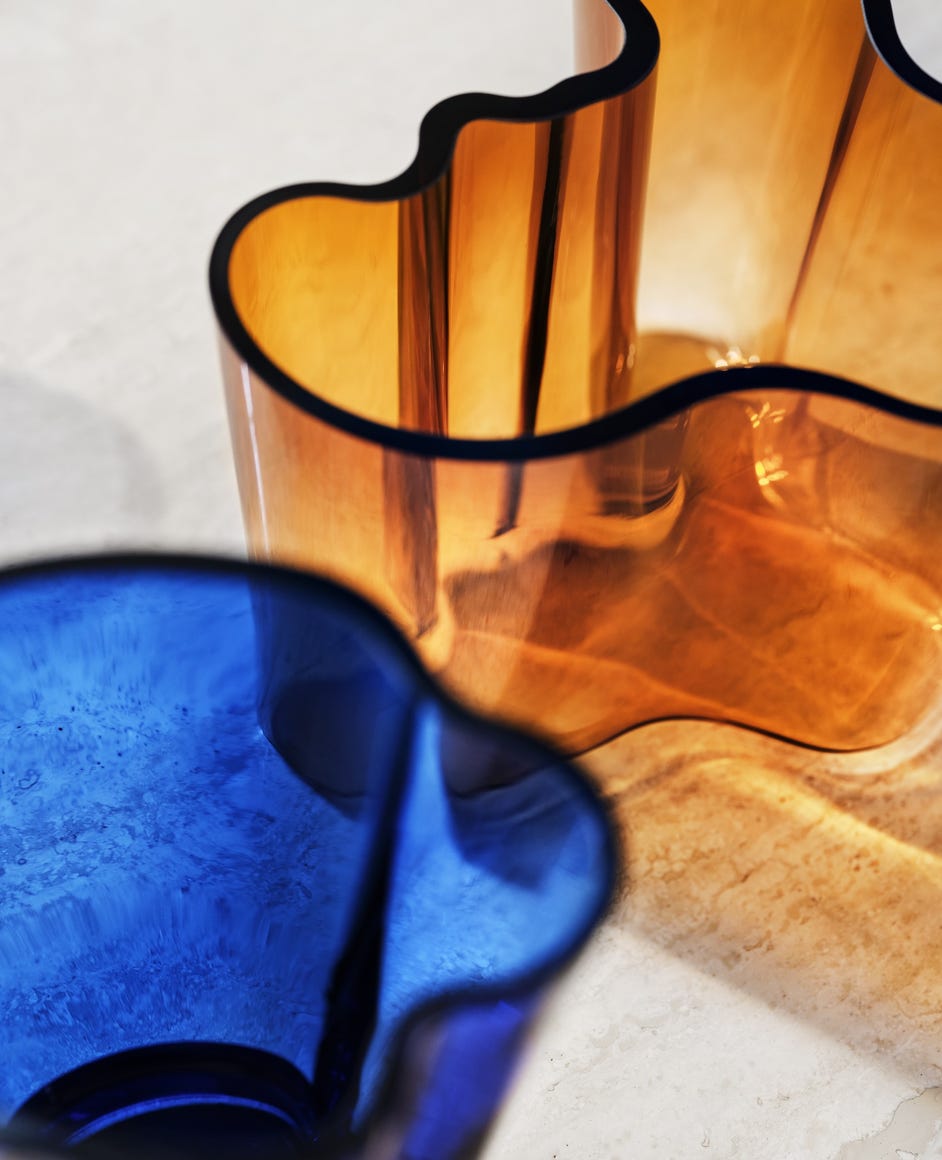
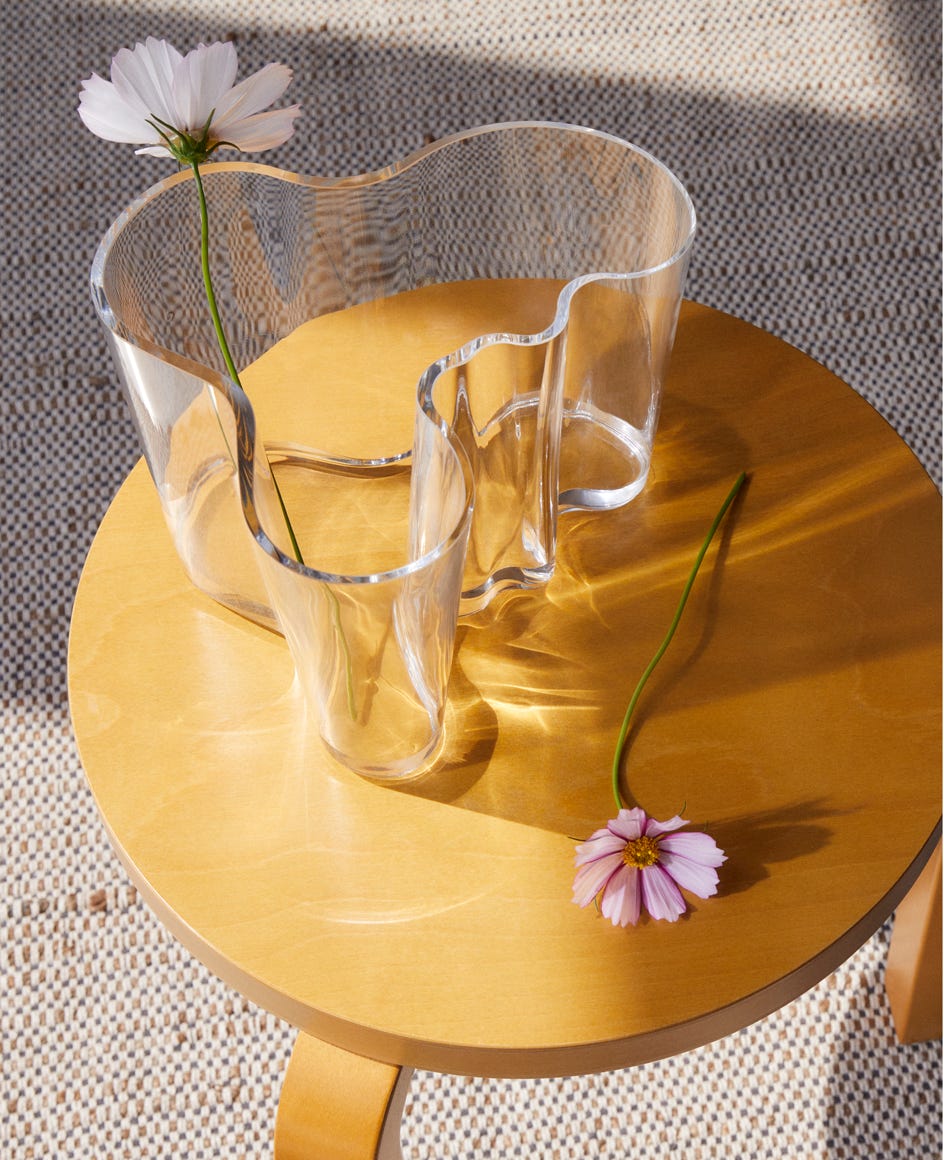
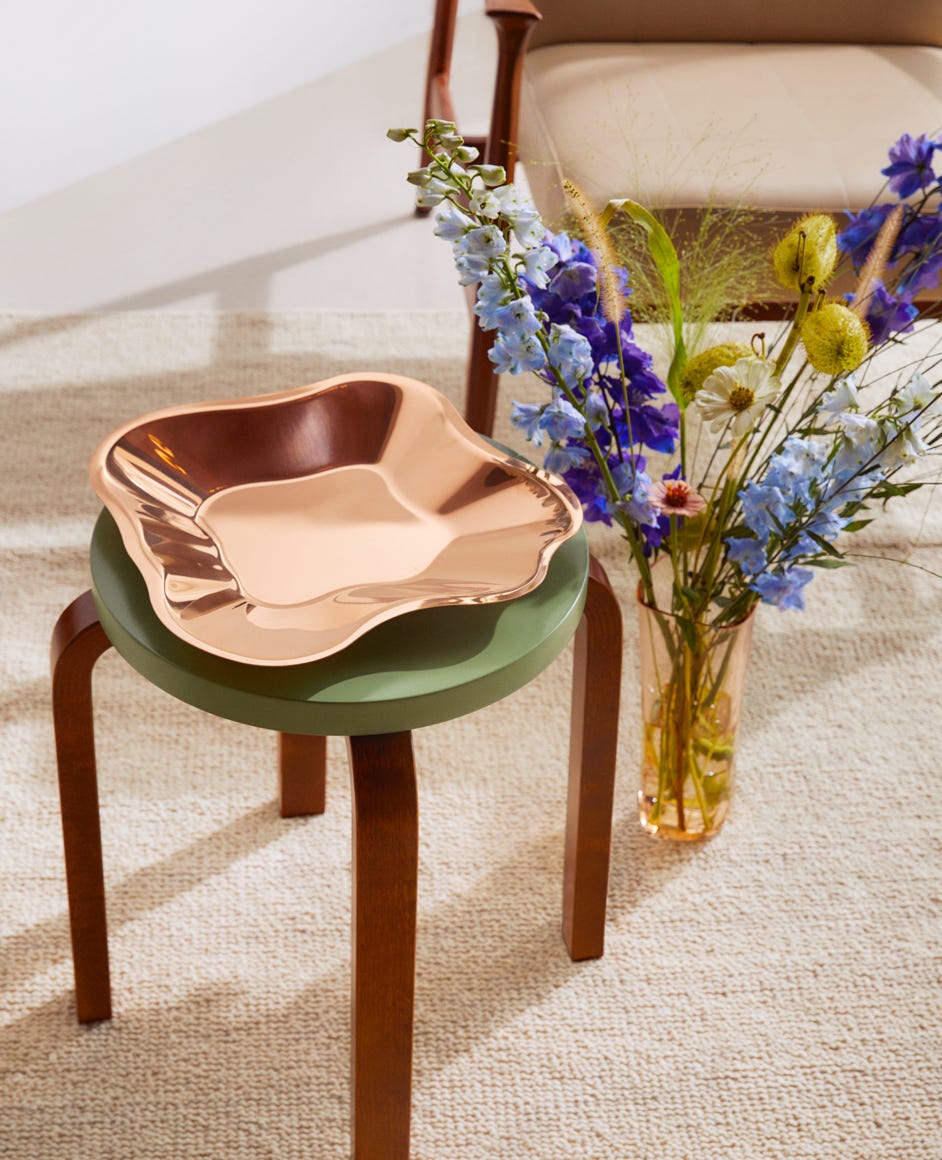
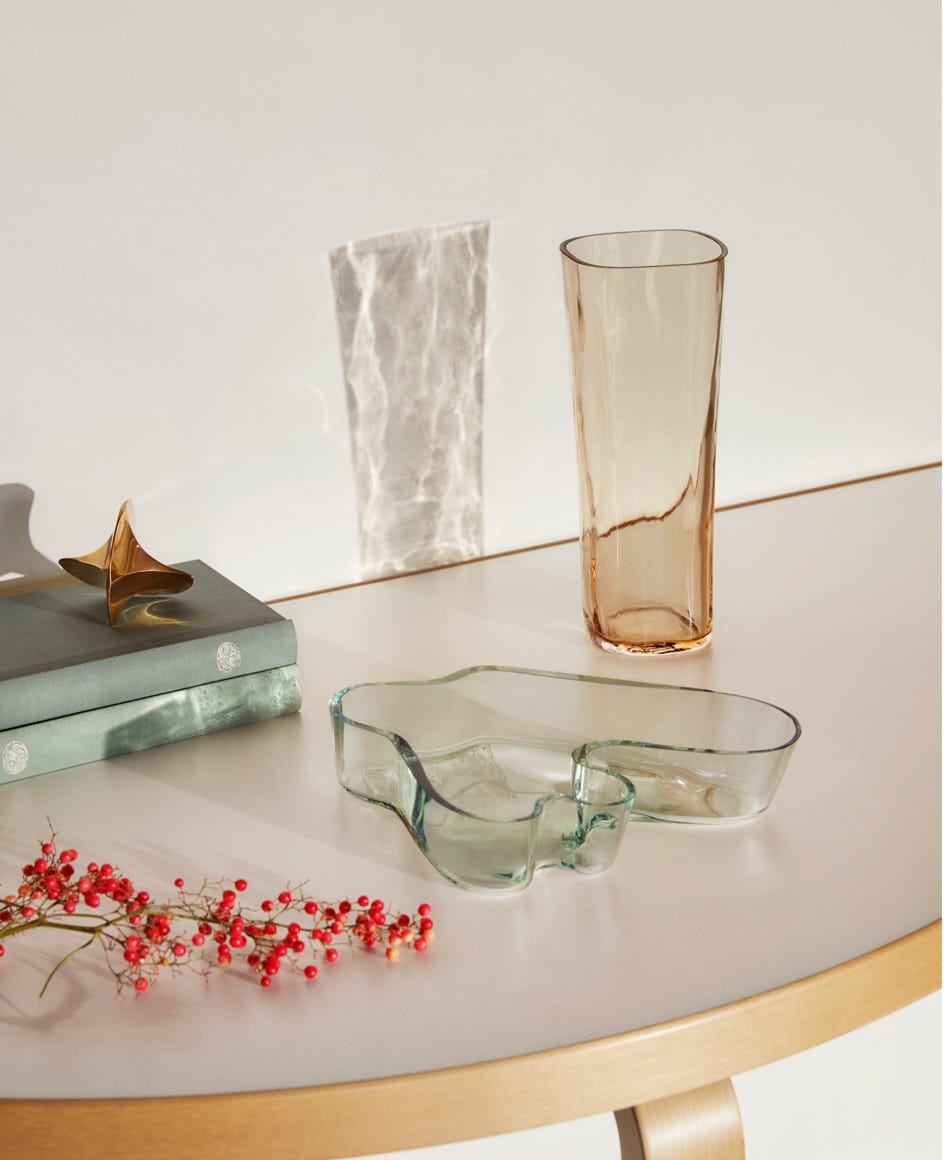
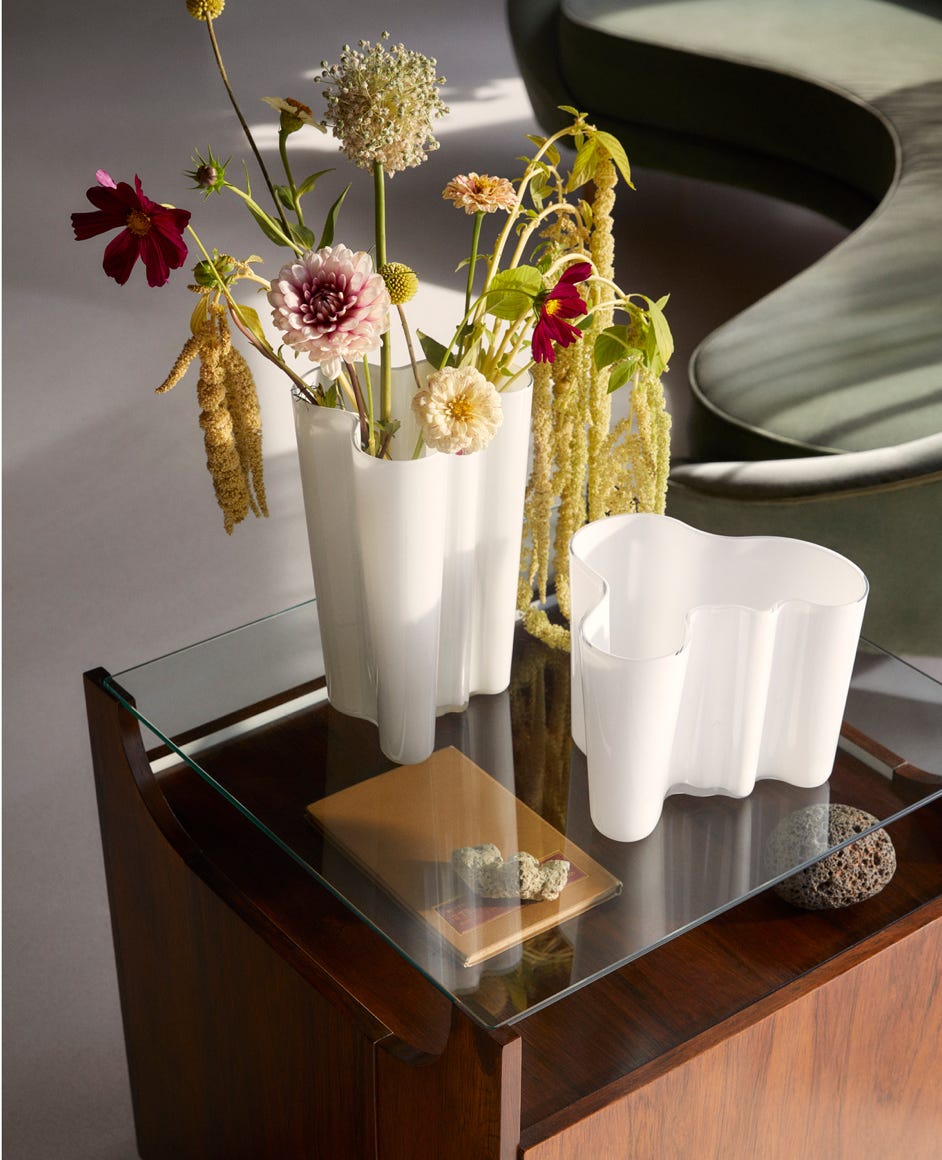
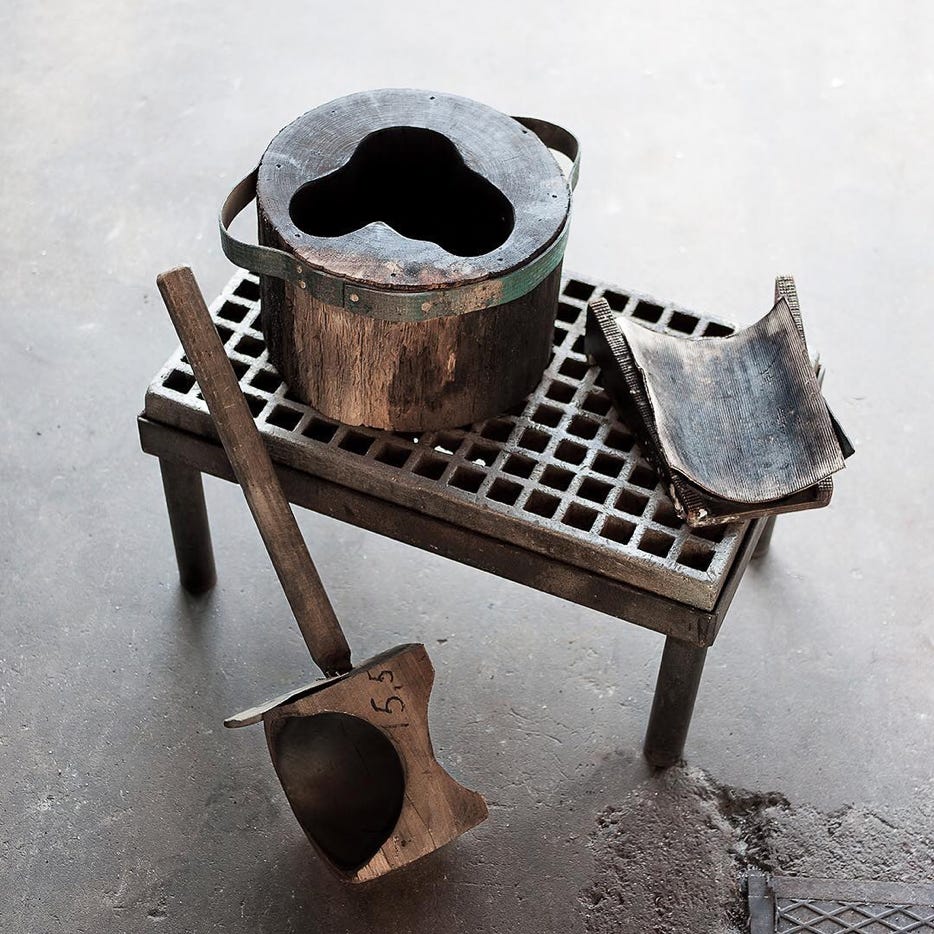
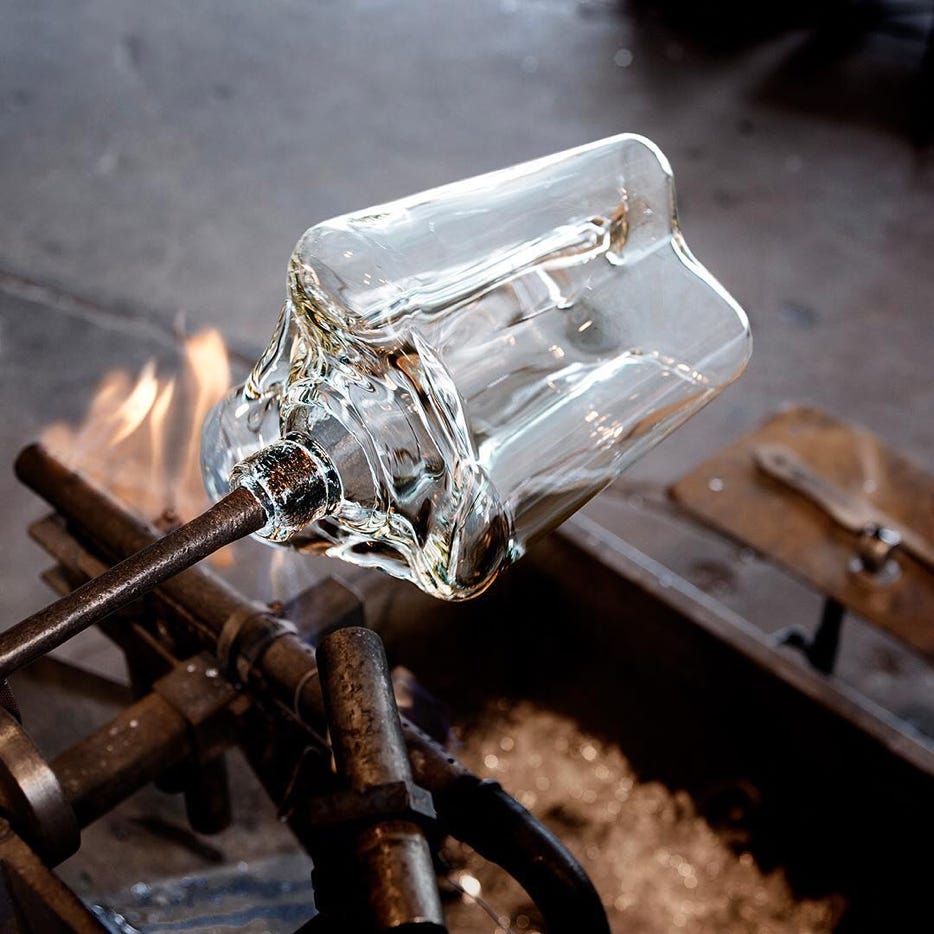
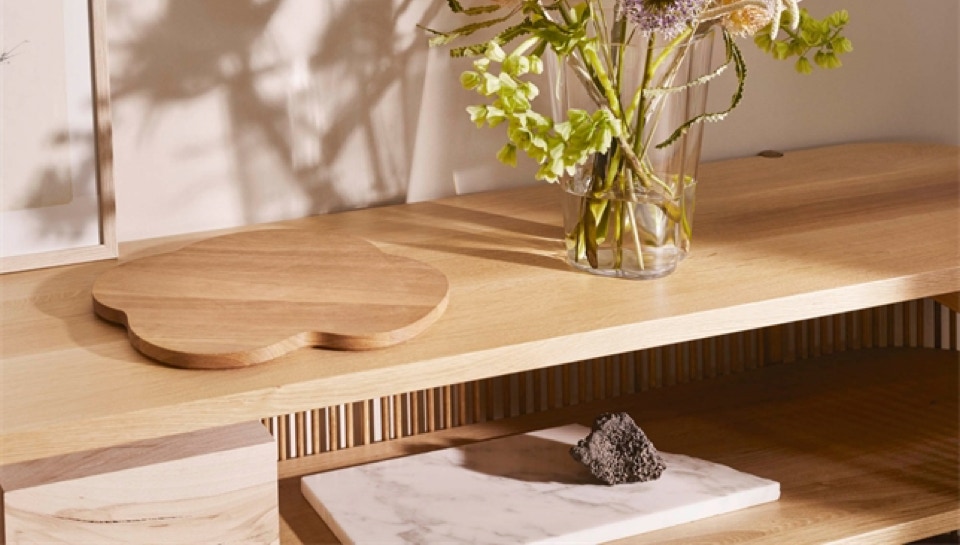
Set of 2 clear vases
160 mm + 95 mm
Clear vase
95 mm
Clear vase
120 mm
Clear vase
160 mm
Clear vase
220 mm
Clear vase
251 mm
Clear vase
270 mm
Ultramarine Blue vase
160 mm
Ultramarine Blue vase
220 mm
Ultramarine Blue vase
251 mm
Ultramarine Blue vase
270 mm
Copper vase
220 mm
Copper vase
160 mm
Copper vase
251 mm
Copper vase
270 mm
Opal vase
95 mm
Opal vase
120 mm
Opal vase
160 mm
Opal vase
220 mm
Opal vase
251 mm
Linen vase
220 mm
Linen vase
251 mm
Linen vase
160 mm
Salmon pink vase
160 mm
Salmon pink
251 mm
Moss green vase
160 mm
Moss green vase
220 mm
Moss green vase
251 mm
Moss green vase
270 mm
Grey vase
160 mm
Grey vase
220 mm
Grey vase
251 mm
Cranberry vase
160 mm
Flower vase clear 4 parts
180 x 360 mm
Clear candle holder
60 mm
Grey candle holder
60 mm
Linen candle holder
60 mm
Seville orange candle holder
60 mm
Clear plate
50 x 380 mm
Opal plate
50 x 380 mm
Clear bowl
H75 mm
Grey bowl
H75 mm
Cranberry bowl
H75 mm
Linen bowl
H75 mm
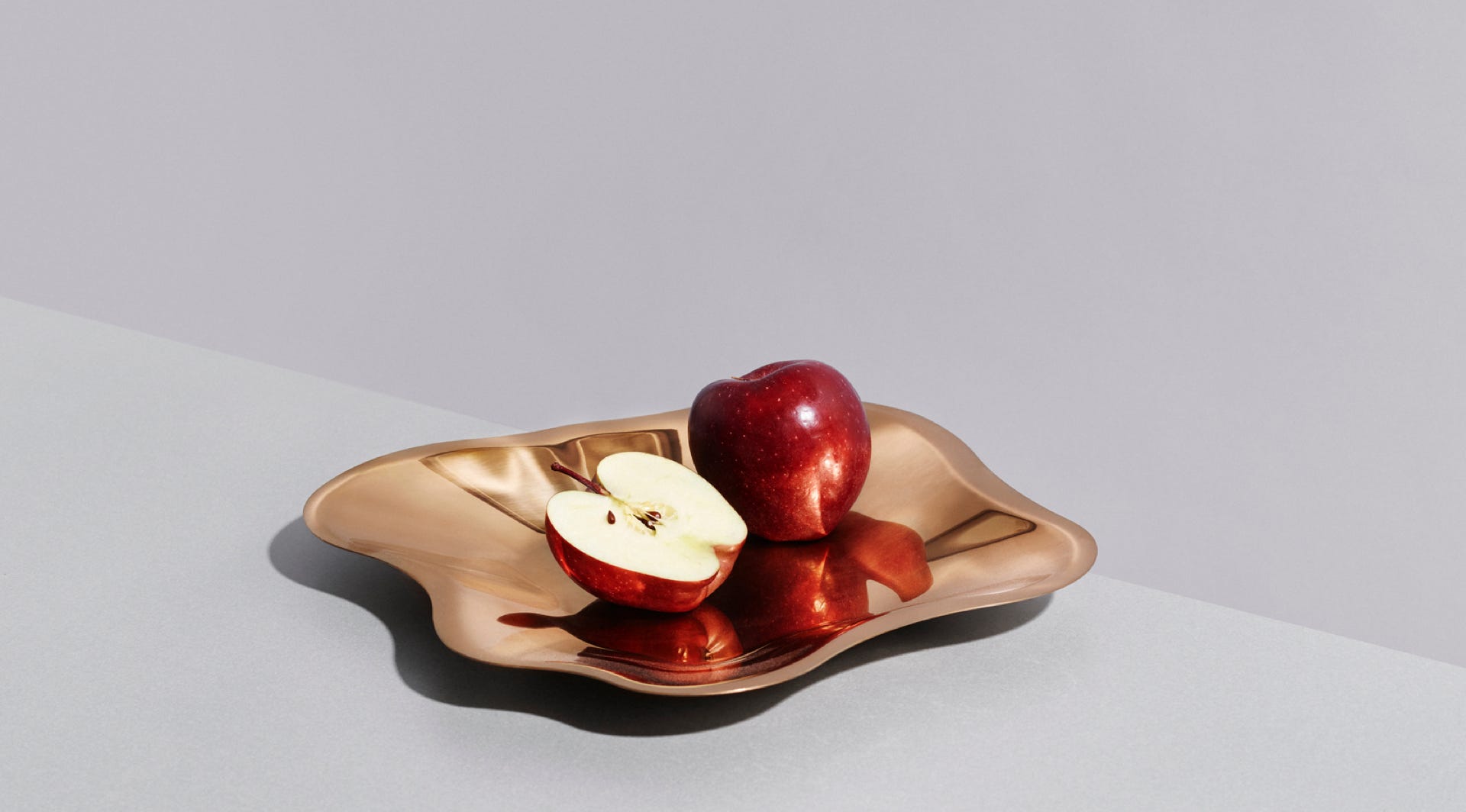
Stainless steel
358 mm
Rose gold
358 mm
Stainless steel
504 mm
Rose gold
504 mm
Stainless steel
50 x 182 mm
Rose gold
50 x 182 mm
Stainless steel
60 x 358 mm
Rose gold
60 x 358 mm
Tray
388 x 397 mm
Tray
339 x 346 mm
Alvar Aalto
Alvar Aalto (1898-1976) is a recognized master of modern architecture and design. Born in Kuortane, Finland, Alvar Aalto began to make his distinct mark in design shortly after receiving his architectural degree from Helsinki Polytechnic in 1921.
In 1924, Alvar Aalto married fellow architect Aino Marsio, creating a lifelong partnership that built an international design legacy. During his remarkable career, Alvar Aalto designed major public institutions including concert halls, museums, universities, libraries as well as private homes throughout the world. Aalto’s furniture and houseware designs derived organically from his architectural work.
Alvar Aalto’s unique aesthetic helped to define Finnish design as well as introduce it to a global audience. Alvar Aalto hallmarks include a harmonious relationship with nature, functionalism combined with beauty, excellent attention to details and an ingenious use of materials.
Aalto’s designs were already being exhibited internationally as early as the 1930s, including at New York’s Museum of Modern Art. When Alvar Aalto premiered his “Savoy Vase” at the 1930 New York World’s Fair, it instantly caused a sensation with its dynamic wavy design that was as alive and fluid as the Finnish lakes that inspired it. The legendary vase is one of the world’s most famous glass objects and remains a timeless staple for Iittala.